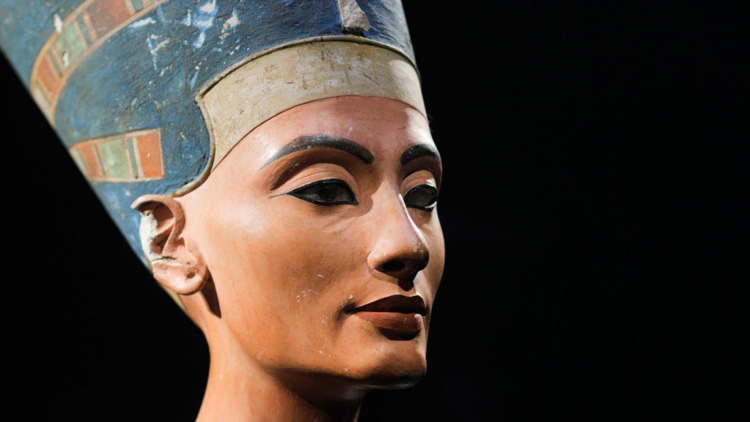Egypt: where the Queen belongs

The Nefertiti bust celebrated its 108th anniversary earlier this month on December 7th, still far away from home. As an Egyptian, certain dates tug at my heartstrings and awaken certain sentiments that make me want to hold forth on the current crisis of stolen artefacts and raise awareness about this global issue.
Over a century ago in 1913, the Nefertiti bust found itself on a one-way trip to Germany, where it still remains to this day. It happened when Egypt, like many other nations in the region, was colonized by the west.
Amongst many foreign excavation teams at that time were the Germans, led by Ludwig Borchardt, who discovered the Nefertiti bust in the governorate of Minya in Upper Egypt. In those days, a law existed stipulating that it was illegal to take any antiquities out of Egypt except through an issuance of a license. Thus, taking the Nefertiti bust, was an action nothing short of pure smuggling.
With all current events and female empowerment advocacy unfolding in Egypt, where more women are speaking up about their long-lived vulnerability and are fueling an uprising – the Nefertiti bust is needed more than ever. It represents a sign of resilience. Amid the long rich history of Ancient Egypt, Queen Nefertiti was a symbol of the ideal feminine beauty in which all Egyptians take pride. She was a strong wife and ruler who proved the females’ powerful influence, which proves to still be alive and stronger than ever amongst contemporary Egyptian women.
Ever since its staggering 1924 public unveiling in Berlin’s Neues Museum, numerous trials and requests have been made by Egypt to return Queen Nefertiti’s bust back to its homeland; with the most notable person being the former Minister of State for Antiquities Affairs, Secretary General of the Supreme Council of Antiquities and Egypt’s Indiana Jones, Dr. Zahi Hawass, whose valuable works for Egyptian archeology and pure passion for Egyptology have made the quest of returning Egyptian artifacts echo across the globe. In 2009, Hawass requested that the German museum return the bust, with no positive feedback. The request was followed by another official one in 2011 where Hawass expressed how important it is for Egypt and Egyptians to have the bust back. However, the answer to this request from the Prussian Cultural Heritage Foundation in Berlin was the following: “The foundation’s position on the return of Nefertiti remains unchanged.” The President of the Foundation, Professor Hermann Parzinger also added: “She is and remains the ambassador of Egypt in Berlin.”
I may not be a big fan of politics nor have I studied it, but one thing I know for sure is that a nation can always withdraw its ambassadors from any given territory and Egypt has been denied this right for many years. Nevertheless, I am assured and aware of the utmost efforts that the Egyptian authorities have been exerting for so long regarding the global and national fight against illicit trafficking of cultural property.
Taking this matter further, I was keen to know if German nationals’ thoughts about the Nefertiti bust aligned with those of German cultural entities. In a conversation with a fellow German AUP student, I realized that keeping the Nefertiti bust in Germany wasn’t a popular opinion amongst the German public. Apart from her following solid statement: “I firmly believe that the Nefertiti bust should be repatriated to Egypt”, my interviewee also brought up the argument of this tension being a symbol of European colonialism, which I personally agree with and absolutely think has no room in today’s modern era. Furthermore, she added why she thinks Germany is still holding onto the Nefertiti bust after discovering it over a century ago:
“As a German, I recognize the convenience and pleasantness of being able to see such a work without having to travel far. However, I have no sympathy for people claiming the bust as Germany’s, just because a German archaeologist discovered it. I know that certain Germans see it as an “icon” for the city of Berlin, and although I respect the efforts given by the Berlin Egyptian museum to present this piece, the historical controversies between Egypt and Germany clearly show that the Nefertiti bust has no business remaining in Germany.”
In order to eliminate any biased opinions, I was keen to talk to a friend, Karim, who has a dual Egyptian/German nationality which would rather allow me to balance perspectives under the umbrella of logic, without involving feelings. When I asked the 26 year old entrepreneur where he thought the Nefertiti bust belonged, he instantly responded: “Egypt.” He explained that the bust physically looked more like Egyptians and symbolized a national cultural treasure. He also added: “When one finds an unattended bag full of valuables and chooses to take it home, this person is automatically categorized as a thief.”
Apart from nationals’ opinions, the Nefertiti bust crisis seemed to have gained academic attention. In ‘Repatriating the Bust of Nefertiti: A Critical Perspective on Cultural Ownership’, Lauren Bearden explores the crisis from a cultural perspective and states that Egypt has ownership rights to the bust and justifies it with a philosophical ideology known as “cultural patrimony” which states that “nationality can be experienced through artifacts of a past culture.”
As more opinions piled up favoring the Nefertiti bust on Egyptian land, I started visualizing its arrival to Egypt, where it would be given the royal welcome it needs, as seen in the transportation of mummies a couple of weeks ago. After all, she would be a queen returning home and would receive a welcome fit for someone who was once the Queen of Egypt.
As an Egyptian, I would like to extend my gratitude to Germany for the care and efforts that have been made to preserve the iconic Nefertiti bust. However, it is time for them and all other nations that keep refusing the return of cultural artefacts to understand that it is a fundamental right for the country of origin and its people, who wish to connect, learn and engage with their ancestors.







